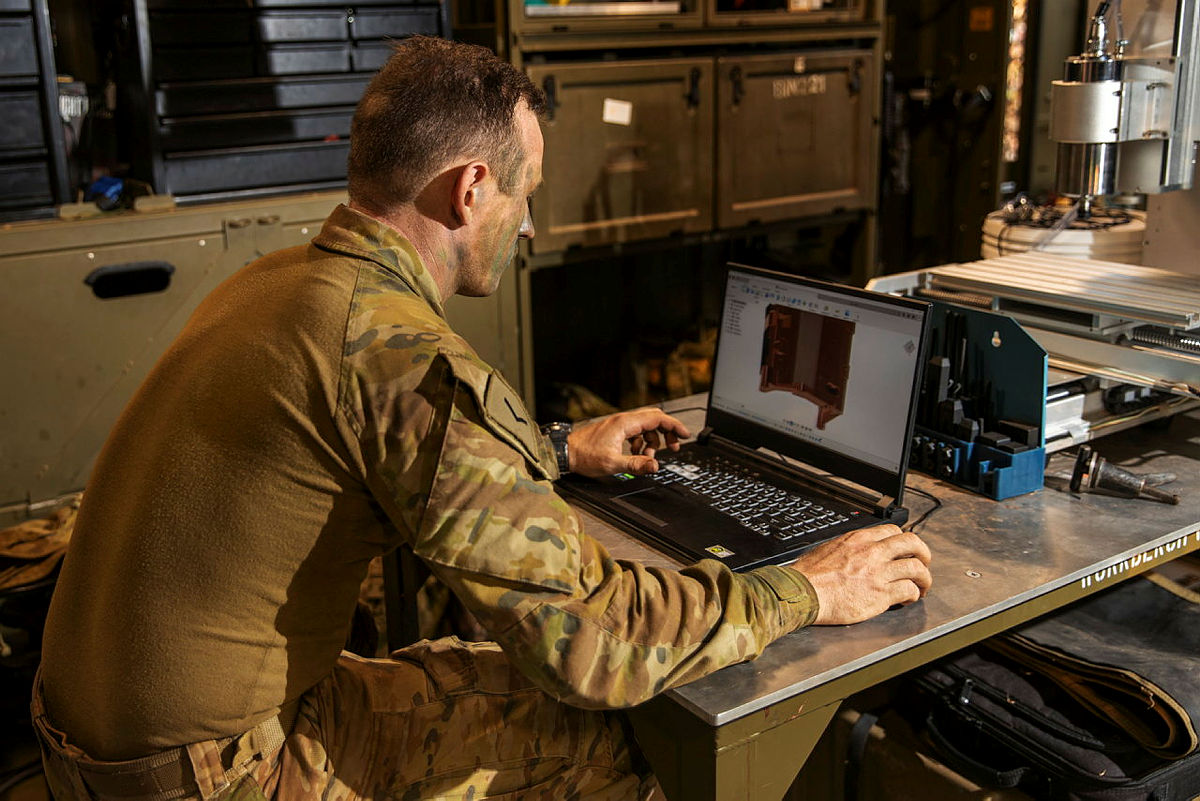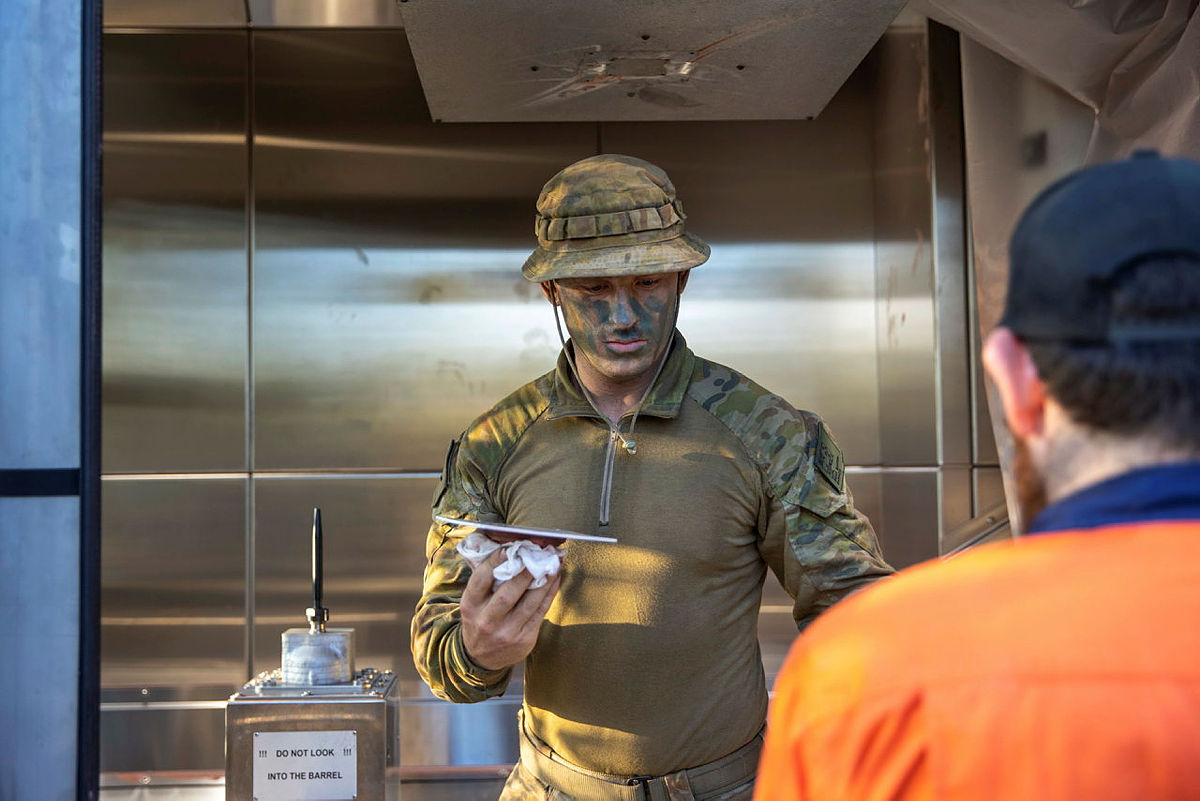TheAustralian Armyhas carried out a second set of field exercises usingSPEE3D’sWARPSPEE3D additive manufacturing systems.
Following the success ofthe Australian Army’s initial field trialsconducted earlier this year, the metal 3D printers have been redeployed to the country’s hostile Northern Territories (NT). Using an upgraded machine, the soldiers were able to 3D print end-use components at stifling temperatures of up to 37oC. According to Byron Kennedy, CEO of SPEE3D, the two-week test reiterated that SPEE3D’s systems are a viable solution for producing military parts, as and when they’re needed.
“This two-week trial demonstrates the WarpSPEE3D is a robust workhorse that is capable of printing real parts and solving real problems in the field,” said Kennedy. “It also proves that soldiers can take control of the whole workflow of creating the spare parts they need, from design to printing and post-processing, right here where they need them.”
“This second field deployment proves our technology is a genuine solution for expeditionary metal 3D printing.”

The Australian Army’s increasing adoption of 3D printing
Since 2014, the Australian Army has sought to integrate 3D printing technology into its operational setup, with the aim of rapidly producing customized equipment for its soldiers. Lieutenant Choi, an Officer in the Australian Defence Force, said at the time, that he would “like to see the Australian Armyutilizing the full benefits of 3D printing by 2020.”
Choi, as it turned out, was not far away with his prediction. In February 2019, theRoyal Australian Navyenlisted the help of metal 3D printer manufacturer SPEE3D, as part of an (AUD)加法制造项目150万美元. Working alongside theAdvanced Manufacturing Alliance(AMA) atCharles Darwin University(CDU), SPEE3D streamlined the Navy’s patrol vessel maintenance process.
In February 2020, Australian Defence Minister Melissa Price announced that SPEE3D and CDU hadlanded a second (AUD) $1.5 million contract, this time to support the Australian Army. The 12-month pilot program saw a WARPSPEE3D system installed at Darwin’s Robertson Barracks, while 20 soldiers received basic training at CDU on how to operate the machine.

Successful field testing of SPEE3D’s systems
Following the success of initial trials, the 20-strong task force was deployed to Australia’s Northern Territories in early June 2020. Soldiers from the 1st Combat Service Support Battalion trucked the WARPSPEE3D 3D printer 120 km out into the bush, for a three-day test at the Mount Bundey field training area. The overall aim of the project was to use the 3D printer to improve the flexibility of the Australian Army’s supply chain.
During initial field evaluations, the soldiers moved the machine to several bush locations, unloaded it onto different terrains, and made the printer operational within 30 minutes. The speed and mobility of SPEE3D’s system allowed the soldiers to print components on the move, removing the need for them to carry spare parts during exercises.
At the time, Lieutenant Colonel Wright said that the system’s portability could also enable the Australian military to better repair damaged equipment during combat missions. “The ability to print repair parts in an environment like this has the potential to significantly reduce our footprint and repair damaged equipment – on the spot – to get us back to our main priority,” said Wright.

Having demonstrated the portability of its SPEE3D printer over three days, the Australian Army has now carried out a longer two-week training exercise, to test the endurance of the machine. A WARPSPEE3D print cell was deployed to various NT locations as part of 1 CSSB’s larger Brigade Support Group. On this occasion, the system featured numerous modifications, and upgrades designed to optimize the machine for challenging conditions.
Leveraging SPEE3D’s patented cold spray 3D printing technology, the unit was able to create components in a rapid and cost-effective way. The WARPSPEE3D system proved capable of printing large metal parts up to 40kg in weight, and at a speed of 100g per minute, even at temperatures of 37oC and 80 percent humidity.
According to Kennedy, the successive deployments of SPEE3D’s systems proved that the machines are quickly becoming the “backbone” of the Australian Army’s 3D printing capabilities.
“This trial proved that our equipment is actually very robust and can endure harsh conditions and rough handling very well,” concluded Kennedy. “We look forward to future exercises and continuing to learn how we best serve the Australian Army and defence industry.”
Nominations for the2020 3D Printing Industry Awards仍然是开放的,让我们知道谁是领导印第安纳州ustry now.
The fourth edition of the3 d印刷行业Awards Trophy Design Competitionis now underway. Enter your design for the chance to win a CraftBot Flow 3D printer.
To stay up to date with the latest 3D printing news, don’t forget to subscribe to the3 d印刷行业newsletteror follow us onTwitteror liking our page onFacebook.
Are you looking for a job in the additive manufacturing industry? Visit3D Printing Jobsfor a selection of roles in the industry.
Featured image shows Lance Corporal Sean Barton and Craftsman Naythan Ryan preparing the SPEE3D system for operation. Photo via the Australian Army.


